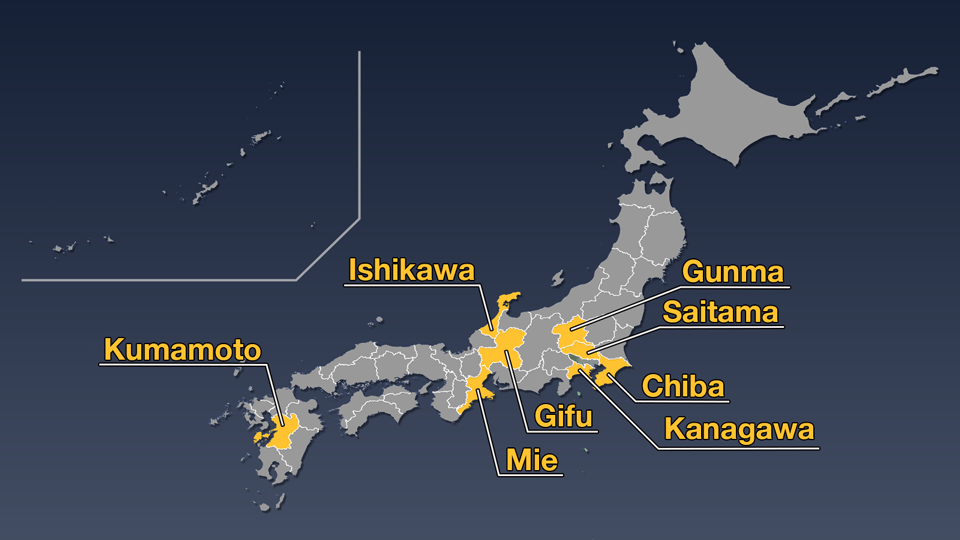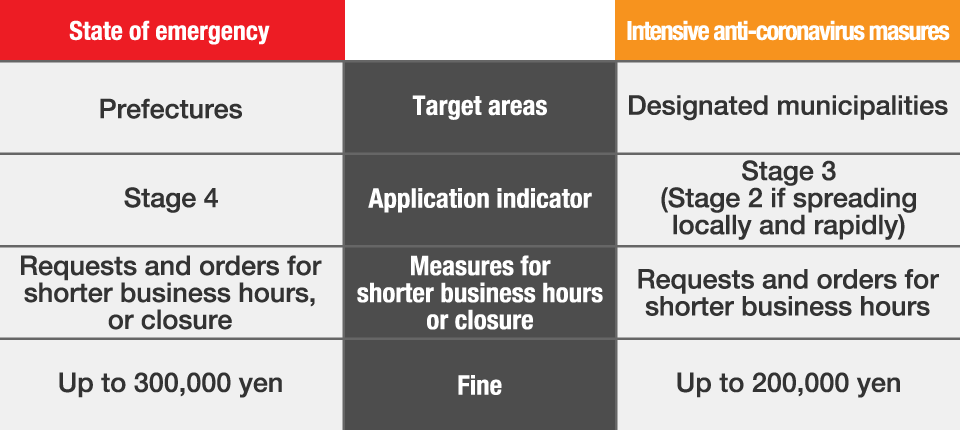This is part 84 of our coronavirus FAQ. Click here to read other installments: #Coronavirus the facts. Find the latest information and answers from experts on everything COVID-19.
Stricter anti-coronavirus measures
New coronavirus infections are on the rise due to variants that are reported to be more contagious.
The Japanese government has given some prefectures a special designation that allows for intensive preventive measures without an official state of emergency. Governors in the affected areas can enact restrictions.
Target areas and period
Stricter anti-virus measures are extended to June 20 in Saitama, Chiba, Kanagawa, Gifu, Mie, Gunma, Ishikawa and Kumamoto prefectures. Ehime has dropped off the list, while Okinawa has stepped up to a state of emergency.
The measures were initially due to be lifted on June 13 in Gunma, Ishikawa and Kumamoto, and May 31 everywhere else.
Prefectural governors decide which municipalities are targeted. Residents need to check whether they live in, or visit, areas where restrictions are in place.
*Updated on June 3, 2021.

Different from a state of emergency
The stricter anti-virus measures are part of the revised coronavirus special law enacted in February.
They allow governors to take special steps without declaring a state of emergency. Japan's Prime Minister announces which prefectures are being targeted, and for how long.
While a state of emergency covers an entire prefecture, the measures currently in place allow governors to focus on specific municipalities.
A state of emergency can be declared when the infection situation reaches the worst level of Stage Four on a four-tier alert system to assess the level of the outbreak.
The stricter measures correspond with Stage Three, but can also be applied at Stage Two if infections are spreading rapidly.
Requests and orders
Under both stricter anti-coronavirus measures and a state of emergency, governors can ask business owners to shorten their operating hours. If the request is ignored, governors can issue an order – and reveal the names of the uncooperative establishments. On-site inspections from local officials are also allowed.
A request for business closure is not part of the stricter measures and is only permitted under a state of emergency.
Issuing fines
Fines can be imposed on businesses that don't follow an order to cut operating hours, or refuse an on-site inspection. Under the stricter measures, fines of about 200,000 yen are applied, increasing to 300,000 yen under a state of emergency.

This information was updated on June 3, 2021.
